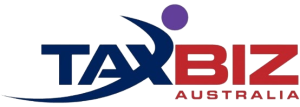SMALL BUSINESS TAX MISTAKES
When it comes to tax mistakes a business owner can make there are many. But three stand out as the most repeated, easiest to avoid and tend to revolve around cash. They are hiding cash, not managing cash flows, and not borrowing tax effectively when there is not enough cash.
The biggest mistake owners make, where their businesses take large amounts of cash, is to dive into the black economy. The problem with black money is it must be spent on non essential things such as entertaining, grog, and lavish holidays. In extreme cases this can lead to a combination of drinking problems, obesity, and the resulting medical conditions such as liver failure and diabetes.
Even when cash is spent on the so called untraceable discretionary items the ATO can still detect tax evasion. This often occurs when the results of a business, where cash is being skimmed, does not match the results of businesses in the same industry. When this is occurs the tax office can easily prove that cash has been taken by checking critical items of expenditure.
An example of this was when the ATO targeted strawberry growers. Suspecting large amounts of cash were not being declared the ATO reviewed certain items being claimed. By multiplying the number of punnets purchased, by the average sales value of a punnet of strawberries, the ATO determined how much income should have been declared, resulting in penalty tax assessments being issued.
One of the biggest problems caused by not declaring cash is the effect that this has on the value of the business. The true worth of a business is the amount of profit it makes. Where large amounts of cash are not declared the profitability of the business is decreased. Unless a business owner can find someone stupid enough to accept a nod and a wink, that the business is worth more because of the cash they have taken, they will find it hard to sell it for what it is truly worth.
Not managing the cash flow of a business can lead to the next biggest mistake made by business owners, which is to ignore ATO deadliness. This often takes the form of not lodging tax returns and GST statements on time, or failing to pay tax, GST or superannuation by the due date.
It has been my experience that when a business starts to delay paying PAYG Withholding amounts from employees, GST collected, and superannuation contribution for employees, they are digging a financial hole that they often can’t climb out of. Just because the tax office is not constantly phoning demanding payment, does not mean they can be ignored.
The ATO is showing that they are prepared to take an increasingly harder line with people and businesses that owe them money. It is now using the services of professional debt collection agencies and is only too willing to wind up businesses and put people into bankruptcy for non-payment of tax. In some circumstances ATO can get behind the corporate veil and chase directors where PAYG Withholding amounts are owed.
When cash is in short supply not borrowing correctly can lead to increased tax being paid. Interest charged on business or investment loans is tax deductible, while for private loans it is not. How borrowed money is spent is what dictates its deductibility, not the type of security used. Where a loan is taken out to extend a home, with a factory being the security, no deduction will be allowed for the interest. Conversely interest on a loan taken out to purchase a shop, with a home being used as security, will be tax deductible.
When it comes to borrowing the golden rule is borrow for business and investment purposes, and pay cash for private items. For example Bob the plumber has $20,000 in their bank account, a tax debt of $15,000, and he needs to purchase a new 1 tonne Ute costing $35,000.
Bob is best to spend $15,000 cash to pay off his tax debt, finance the ute using a tax deductible chattel mortgage, and keep $5,000 in cash for other private purposes. Had Bob spent the $20,000 as a deposit on the Ute, and taken out a loan to pay the tax, he would have had no cash left, a non-deductible loan of $15,000, and a tax deductible loan of only $15,000.
It is also always good practice to keep business and private loans separate, rather than combining them into one loan. When this occurs repayments of the loan are applied in proportion. Where separate loans are taken out interest only can be paid on the business loan while the private loan is paid off as quickly as possible.
If you need help with making sure your business does not get attacked by the ATO tax avoidance, or you need to make sure the benefits of cash and borrowed money are maximised, contact us at TaxBiz Australia.

